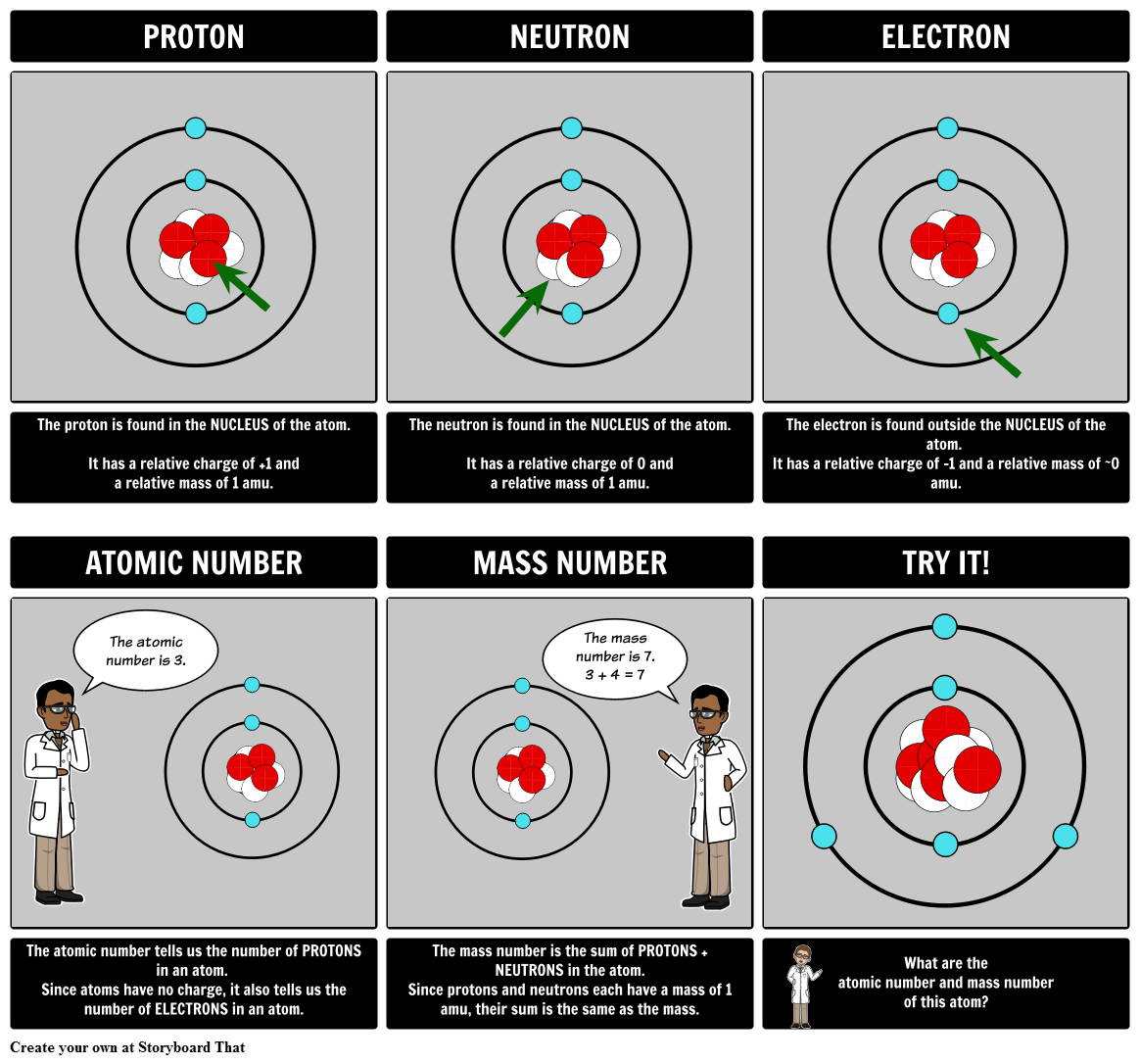
 Gluons: Also found within protons and electrons, they act as exchange particles that help transfer strong force between quarks. A proton contains three quarks (two up quarks and one down quark), whereas a neutron contains (two down quarks and one up quark). Quarks are of six different types: up, down, top, bottom, charm, and strange. However, their exact position in an atom cannot be measured with accuracy. They were independently discovered by Murray Gell-Mann and George Zweig in 1964. Quarks: They are fundamental subatomic particles that makeup protons and electrons. Given below is a table showing the charge, mass, and location of the three sub-atomic particles: Name of the Particle Neutrons are neutral particles with no charge but have a substantial size and mass similar to a proton. They were discovered by James Chadwick in the year 1932 and are denoted by the symbol n or n 0. Neutrons, similar to protons, are made of quarks and gluons. They are also found within the nucleus along with the protons in a tightly packed manner. Protons consist of even smaller particles called quarks and gluons.įound tightly packed with the nucleus, they make up virtually all of the mass of an atom along with the neutrons. They were discovered by Ernest Rutherford in the year 1917 and are denoted by the symbol p or p +. Protons are positively charged particles found within a dense region at the center of the atom called the nucleus. When the number of negatively charged electrons is equal to the number of positively charged protons, the atom is neutral in charge. Thomson discovered it in the year 1897.Įlectrons move so fast around the nucleus that their exact location within an atom cannot be determined with accuracy. The standard symbol used for an electron is e or e –. Unlike protons and neutrons, electrons are fundamental particles much smaller (almost 1800 times) in size than protons and neutrons. They are negatively charged particles that revolve around the nucleus in a fixed orbit. In contrast, electrons are found outside the nucleus in a region called the electron cloud or electron shell. Electrons and protons are found at the center of the atom within a dense region called the nucleus.
Gluons: Also found within protons and electrons, they act as exchange particles that help transfer strong force between quarks. A proton contains three quarks (two up quarks and one down quark), whereas a neutron contains (two down quarks and one up quark). Quarks are of six different types: up, down, top, bottom, charm, and strange. However, their exact position in an atom cannot be measured with accuracy. They were independently discovered by Murray Gell-Mann and George Zweig in 1964. Quarks: They are fundamental subatomic particles that makeup protons and electrons. Given below is a table showing the charge, mass, and location of the three sub-atomic particles: Name of the Particle Neutrons are neutral particles with no charge but have a substantial size and mass similar to a proton. They were discovered by James Chadwick in the year 1932 and are denoted by the symbol n or n 0. Neutrons, similar to protons, are made of quarks and gluons. They are also found within the nucleus along with the protons in a tightly packed manner. Protons consist of even smaller particles called quarks and gluons.įound tightly packed with the nucleus, they make up virtually all of the mass of an atom along with the neutrons. They were discovered by Ernest Rutherford in the year 1917 and are denoted by the symbol p or p +. Protons are positively charged particles found within a dense region at the center of the atom called the nucleus. When the number of negatively charged electrons is equal to the number of positively charged protons, the atom is neutral in charge. Thomson discovered it in the year 1897.Įlectrons move so fast around the nucleus that their exact location within an atom cannot be determined with accuracy. The standard symbol used for an electron is e or e –. Unlike protons and neutrons, electrons are fundamental particles much smaller (almost 1800 times) in size than protons and neutrons. They are negatively charged particles that revolve around the nucleus in a fixed orbit. In contrast, electrons are found outside the nucleus in a region called the electron cloud or electron shell. Electrons and protons are found at the center of the atom within a dense region called the nucleus. 
Students may be interested in the even smaller particles of quantum physics-like quarks, bosons, neutrinos, and antineutrinos.All atoms except hydrogen contain three basic subatomic particles: 1) electrons, 2) protons, and neutrons. They are intended to get players thinking about what they already know about elements. General questions about the properties of elements assume standard temperature and pressure (helium is liquid below -268☌ and gold is a liquid above 1064 ☌). For this game, the most common isotopes of the chemical elements are used. This game presents a simple introduction to the Rutherford-Bohr model of the atom and the way we organize the elements. NS 5.8.2 - Develop an understanding of properties of matter Note:
Any bond or intermolecular attraction that can be formed can be broken. Chemical and physical properties of materials can be explained by the structure and arrangement of atoms, ions, and molecules and the forces between them. Matter is made from discrete fundamental units called atoms. Concepts:Ĭhemical elements, Periodic Table, chemical symbols, atom, atomic number, atomic weight, protons, electrons, neutrons, atomic structure. Interactive module that introduces atomic structure Learning objectives:Īfter this activity, the student will be able to describe the basic structure of matter, name the parts of an atom, have experience using the Periodic Table, explain elements, and have the background to understand isotopes. Teacher Information: Activity Description:






 0 kommentar(er)
0 kommentar(er)
